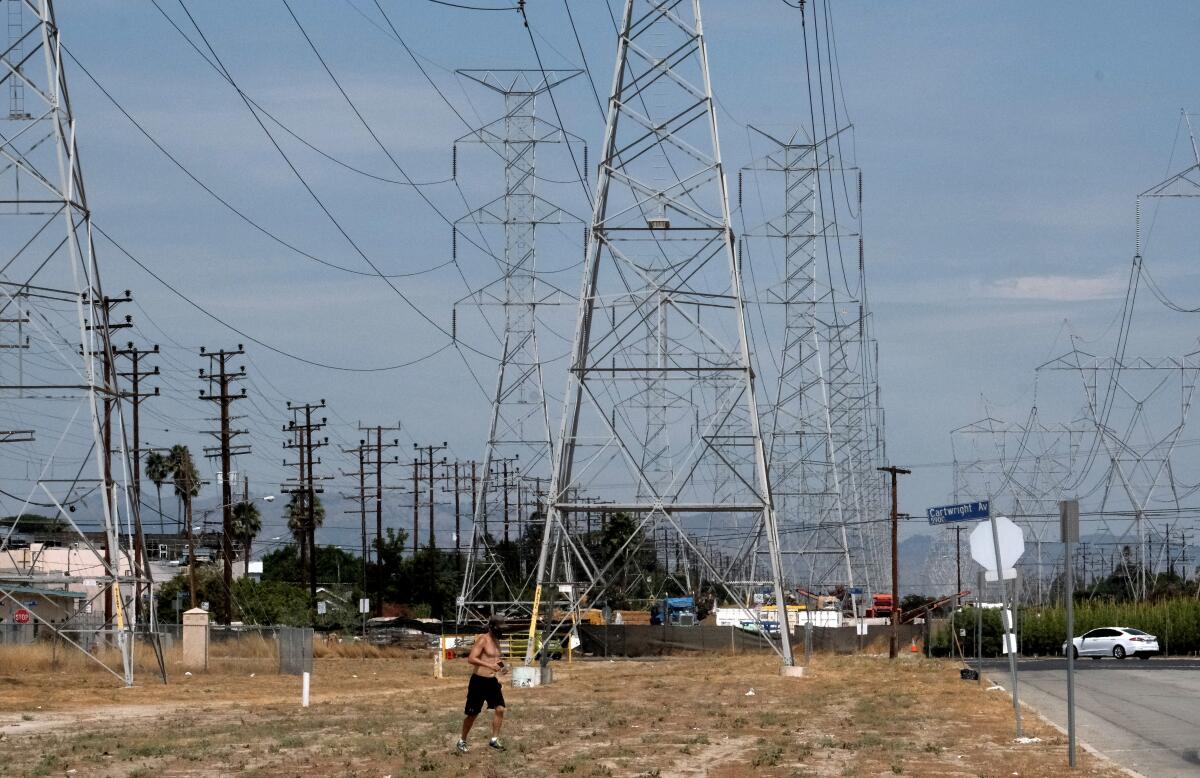Editorial: No, California’s shift to green power isn’t to blame for rolling blackouts

In June, the Arctic experienced a disturbing heat wave. One town in Siberia recorded a high of 100 degrees, possibly the highest temperature ever recorded for the Arctic and more befitting the hottest place on Earth, Death Valley. Speaking of which, Death Valley may have just hit the highest recorded temperature recorded anywhere in nearly a century, 130 degrees.
What do record temperatures in these two extreme regions have to do with the rolling blackouts that California utilities are imposing this week amid a brutal heat “dome” over the Western United States? A lot, actually, though not in the way green power critics would have you believe.
Simply put, the climate is changing and fossil fuels are part of the reason why. While so much of the country remains stubbornly committed to fossil fuel-powered sources of energy, California has been embracing renewable power sources with a goal of dumping fossil fuels completely in 25 years. The state is already one-third of the way there.
That’s a remarkable achievement. But it’s the nature of great undertakings, particularly those that require charting a brand-new course, to encounter missteps and unanticipated problems that can then serve as case studies for those who follow. (You’re welcome, America.) The rolling blackouts that began Friday, which may continue through Wednesday and are making life miserable for millions of Californians, appear to be one of the inevitable bumps along the way to sustainability.
People who’ve dismissed humanity’s role in accelerating climate change, including President Trump, have predictably seized on the blackouts as a cautionary tale. If the Green New Dealers within the Democratic party take control, they argue, the rest of the United States will be stuck with power grids that can’t meet the demand.
Hogwash. The shift to tapping the sun, wind and waterways for power isn’t the root cause of the state’s rolling blackouts; it was the failure to adequately prepare for an entirely predictable scenario of a prolonged and widespread heat wave that would make power imports less accessible to a grid that was in the middle of a difficult but essential transition to sustainability.
In fact, this was predicted. Nearly a year ago, the California Independent System Operator, the entity that moves power around the state as needed and buys from plants outside the state to ensure an adequate supply, warned of this exact scenario occurring this summer. On Monday, officials at the Independent System Operator blamed public utility regulators for failing to act, and public utility regulators in turn suggested the Independent System Operator was at fault. Gov. Gavin Newsom has launched an investigation to sort this out, but undoubtedly there is enough blame to go around and to share with policy makers and even power users who don’t lift a finger to conserve energy. Climate change is everybody’s problem to solve.
The blackouts are a reason not for California to back away from its commitment to building a sustainable power grid, but to do a better job of making the transition. That means moving quickly to build backup capacity and storage facilities that can make power available when solar panels and wind turbines aren’t generating any. It means expediting smart meter installations that help consumers and utilities better control electricity usage by shifting the demand for power to non-peak times. And it means looking ahead so that the state won’t face new shortages in four years, when Diablo Canyon, California’s last nuclear power plant, will begin shutting down.
With the right kind of planning and investment, we shouldn’t have to worry that California won’t be able to keep on the lights during the next extreme weather event. Nor should anyone else.
More to Read
A cure for the common opinion
Get thought-provoking perspectives with our weekly newsletter.
You may occasionally receive promotional content from the Los Angeles Times.










